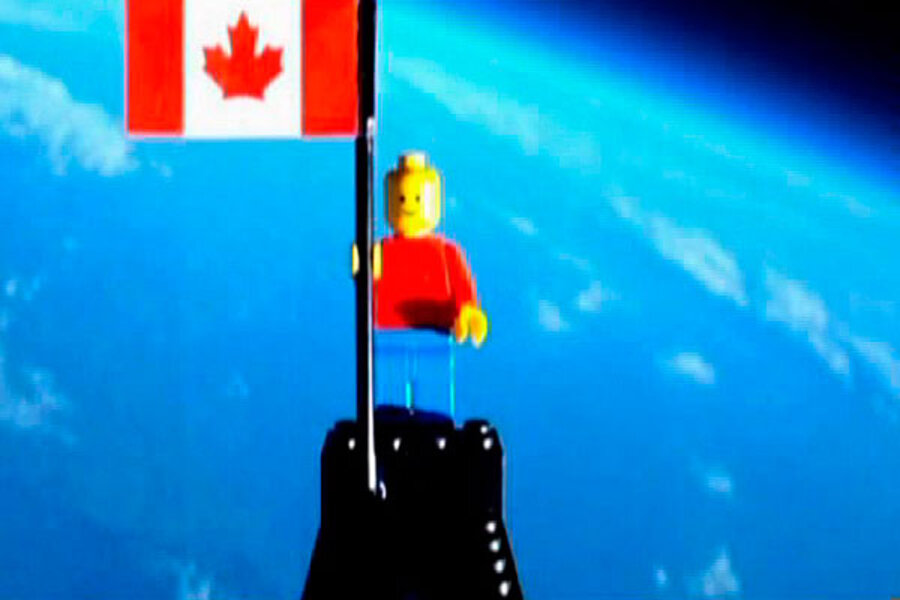Canadian teens send Legonaut into 'space'
Loading...
OK, technically, Lego Man didn't get into space.
But that doesn't make this $400 science project by two Canadian teens any less cool.
Mathew Ho and Asad Muhammad, a couple of 17-year olds, sent their Canadian flag-toting Lego figure aloft beneath a weather balloon they bought online for $85.
The packed a Styrofoam box with some gel hand warmers to keep three point-and-shoot cameras and a video camera (bought used on Craigslist) functioning at the below -4 F (-20 C) temperatures. They also put a cellphone with GPS aboard to track it. And they stitched together a parachute (on Muhammad's mom's sewing machine) to bring their Legonaut and their cameras safely back to Earth.
The boys filled their weather balloon with $165 worth of helium, bringing it close to the bursting point. Why so much?
“If you fill your balloon, say, halfway, it will reach a higher max altitude but then obviously it’s got a lot more time in the air so it has a lot more time that it could be affected by wind,” Ho explained to The Toronto Star.
“A perfect flight plan would be just up and down, on the same spot. The less we had to drive (to retrieve Lego Man) that was our goal, especially since we’re surrounded by so many lakes. There were so many problems that could go wrong," said Ho.
Watch their video and you can see when the balloon bursts – at 24 kilometers above the earth (almost 80,000 feet). NASA says that an object isn't in "space" unless it reaches about 50 kilometers above the Earth.
After the balloon reached its bursting point, the parachute brought the package of cameras, cellphone, and, of course Lego Man, safely back to the ground - about 122 kilometers (and 97 minutes) from its launch at a soccer field in Newmarket, Ontario. Prior to the launch, the boys used a University of Wyoming site that calculates weather balloon trajectories. And with the help of the GPS, they recovered the package after a hunt in the woods near Rice Lake.
Certainly, they aren't the first to launch a video camera into the stratosphere. In fact, Ho said that they were inspired by Massachusetts Institute of Technology students who'd sent a video camera aloft on a weather balloon a couple of years ago.
Still, the MIT students didn't send Lego Man up, up, and away.








